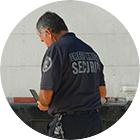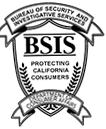In recent times, there has been a marked increase in incidents that involve active shooter crimes in the US, according to the Federal Bureau of Investigations. These incidents are common in public places and institutions, which prompts the need for staff or facility occupants to receive proper active shooter training. Green Knight Security conducts active shooter training that involves risk assessment management for individuals, businesses, and institutions in Los Angeles, California.
What are Active Shooter Incidents?
An active shooter incident involves an individual who is actively engaging or attempting to open fire and kill unarmed civilians in a confined or crowded area. This definition is derived from the US government agencies that are charged with dealing with active shooters or handling aftermaths of such occurrences in the country.
Active shooter incidents can occur in any environment, with dire consequences to a facility's staff, customers, or residents. Preparedness training means taking calculated risk-minimizing actions to make arrangements for the protection of your life, the lives of employees and guests. This training is aimed at reducing or eliminating injuries and other casualties such as fatalities from an active shooter situation.
According to the nature of your enterprise, there is a need to thoroughly assess a viable, detailed, and implementable plan that is specific to your site plan of staff active shooter training.
Your active shooter preparedness plan must include:
- Procedures for active shooter facility-wide reporting,
- Systems for reporting the situation to authorities,
- Lockdown and evacuation plans for facility guests and occupants, and
- Information on local emergency response agencies.
Risk Assessment for Active Shooter Preparedness
Assessing risks means being able to predict and establish the likelihood of an occurrence of an active shooter incident. Evacuation procedures and casualty response are part of risk assessment, and so are communication or mass notification systems. Since over 40% of incidents involving an active shooter occur in the business setting, there are proactive steps that an employer should take.
Risk assessment is the initial step for your organization to take proactive measures towards safeguarding staff, assets, and customers. Comprehensive risk assessment for active shooter training will provide your business or personnel with actionable solutions for complementing security.
There are requirements for facility and staff risk assessment that include extensive information collection phase. The established line of authority or your facility security management must gather and analyze evidence according to the California state operations manual for risk assessment.
Threat or risk assessment will also involve your approach to the challenges related to active shooter preparedness and planning. Types of active shooter threat assessment include;
-
Security Risk Threat Assessment
The security risk which your staff and other occupants are exposed to is assessed, within which a plan to protect critical facilities or infrastructure can be formulated. Security risk threat assessment helps identify and plan on the protection of your business environment from active shooters. This plan must incorporate security factors like;
Access Control
Access control means identifying the entry methods to your facility that may facilitate potential active shooters. Your security solution should include proper technology and training for implementing risk management measures as part of access control.
This decreases the potential likelihood of an active shooter obtaining access, meaning you've already recognized your facility’s vulnerabilities.
Surveillance
Surveillance is the early detection of an active shooter threat before they open fire or injuries are sustained. Whether remote or premise-based, monitoring allows personnel responsible for identifying, locating, and responding effectively towards active shooter activity.
Communication and Mass Notification
For you to safely coordinate security and staff during or after an active shooter incident, communication must be flawless. The fluent liaison with other agencies such as the nearest police station or emergency medical response personnel will entirely depend on your efficient communication network.
The effective delivery of a facility-wide active shooter alert and to evacuate or lock down the building utilizes mass notification systems that do not fail during an active shooter alert.
Trained Personnel
Training your security staff is not the only way to be prepared for active shooter incidents. Regular staff members, administrators and frequenters to your premises should also be trained for active shooter preparedness.
Delegated Figures of Authority
An appointed line of leadership during the chaotic moments of an active shooter incident will ensure that the situation remains contained. Since an emergency involves panic, a frequently rehearsed and well-regulated line of authority figures will ensure that the set procedural for mitigating an active shooter’s impact is initiated.
-
The Threat of Violence Risk Assessment
This involves assessing specific individuals who are likely to commit forms of violent crimes in the future. Countering violent occurrences and mitigating its escalation minimizes the probability of developing into active shooter situations, especially if these potentially violent people have access to your facility.
Violence threat risk assessment is taking a preventative approach towards those who may commit acts of violence, even where the likelihood is low. The evaluation is not based on the individual's commission of prior violent crimes of any specific nature. Evaluation and adequate intervention measures are put in place as a result of the risk of violence assessment.
-
Instrument Violence Risk Assessment
Assessing the threat of instrument violence surrounds the prior identification of a specific attack. The instrument here means any type of weapon, and this assessment involves how you will intervene during a shootout. This assessment is individually based and can be focused on the specific environment to identify and intervene with potential active shooters in the short or long term.
-
Active Threat Assessment
Coordinating with security or law enforcement and first responders in the instance of an active shooter occurrence is part of your effective threat assessment plan. Reaction to an individual who threatens your premises can be described as a proactive threat assessment approach focusing on the facility and the people within it.
The active threat assessment methodology helps you to identify threatening persons that carry firearms and is related to law enforcement response in an active shooter situation.
-
The Threat to Location Risk Assessment
Your location may also have a positive or negative impact on active shooter prevention and reaction. A less controlled access facility may have challenges with managing their risk assessment due to the movement of people. While the prevention and protection of people in more secure locations will complement threat assessment; there should also be insider threat preparation.
Mixed open and free spaced premises may also have to deal with reaction plans that must incorporate location-specific threat assessment methodology.
Why Consider Active Shooter Training for Comprehensive Risk Assessment?
Think about your active shooter approach and the distance of time within your threat assessment. Your ability to place preventative resources must include active shooter training efforts for your security officers, staff, and visitors. Once active shooter risks to your facility have been assessed, expert trainers can help you initiate countermeasures to be put in place for mitigation and management.
Your active shooter trainer will determine any additional procedural, physical factors that could make the facility more susceptible to active shooter events. Training will empower, prepare, and educate your human capital on handling active shooter scenarios.
Well-crafted and rehearsed emergency operation plans usually develop from the improved personnel alertness after active shooter training. The physical security professional with assessment certification conducts a process of recommendations for your organization that involves all security-conscious members of your team. These will include an assessment of facility attacks with an inside out or outside in perspective.
Comprehensive risk assessment may mean the difference between surviving the violence of active shooter instances and suffering irreparable damage to your organization. The inclusivity of threat weakness and danger to staff, clients, and assets is the provision of risk assessment within active shooter training. The services of a consulting security team with active shooter risk assessment instruction expertise will instill a mindset of resilience and transform how safety productive your response is.
Active shooter training also aims at enhancing teamwork to initiate your risk assessment plan of thought-through action. Elements of an active shooter situation within your business or personal space will require that you are prepared and can recognize vital response factors. Active shooter training focuses on risk assessment and the creation of a suitable reaction plan that will save lives.
Contact an Active Shooter Preparedness Trainer and Security Expert Near Me
Green Knight Security understands the challenges that a business faces to keep staff and clientele safe from active shooter incidents. We are here to help you put in place risk assessment programs that are customized to your specific requirements and locale. Contact a security specialist at Green Knight Security for active shooter training at 844-457-8326, in Los Angeles, California.







